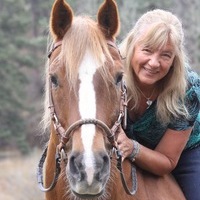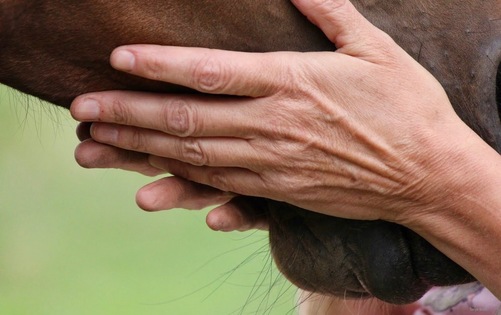
The Most Popular Horse Breeds Of 2019
Equestrian Advice & Guides General Equestrian
Build your business profile for FREE and expose your services to thousands of potential clients!
Create my profile now!
Horses and touch go together like sand and sea. You can’t be with your horse or near any horse, for that matter, without touching, stroking and petting him. But how does the horse feel about all that caressing?
For the horse, touch is an important part of his world, just as it is in yours. You may believe a horse’s skin is thicker and less sensitive than your own, but recent research shows this may not be correct; at least not 100% correct. The thickness of the skin varies depending where on the body we measure, and in general, the skin of a horse is less than one millimeter more than our own.
Thickness does not always equal sensitivity, though. Nerve endings are what determine how much feeling there is for the animal. Over the rump, along the top of the neck and over the withers, the skin is thicker than the skin covering the flanks and face. The hair covering the horse is additional protection from the elements, insects, the sun, wind, and the touch of a whip.
Touching between horses is common and they seek one another for mutual grooming, play and comfort. A horse can’t reach every place on his own body to scratch or rub himself, so he seeks the help of other equines, or finds a bush or tree to rub against. Standing head to tail, horses who are best friends will bite at each other’s withers, crest and backs. Horses stand head to tail under the shade of a tree in summer to help swat the flies off each other. Foals touch their dams often during the day as a way of communicating or to receive comfort.
So how does the horse like to be touched?
Think about bugs. A tiny, seemingly insignificant gnat can irritate your horse to the point of distraction. When a fly lands on the horse’s rump, the horse may not react, but that same fly lands on his ear or face and suddenly the horse is shaking his head and diving his nose to the ground or even running to get away from the irritant.
This tells us that touching a horse softly is probably not the best approach, but touching him with intent and pressure is something he will like and seek. He doesn’t want to be patted and yet most people will swat their horse on the neck or barrel to tell him he’s a good boy. But watch him closely and you will see that each blow elicits not a positive feeling in your horse, but rather a tightening of his muscle, the squinting of his eyes, the raising of his head and perhaps even a tail swish.
To reward your horse, he would prefer a scratch or rub along his crest or near his withers. If you are on the ground, he likes his eyes stroked with the open palm of your hand, or maybe he likes a chest scratch that reaches between his front legs. Anywhere he can’t reach that may be sweaty; he’ll love being scruffed and rubbed.
Those light, tickley strokes are irritating to your horse in the same way they are to you if you have ever had a spider walk across your arm. They make him want to get rid of the annoyance and if you are the source of the irritation, he will want to get rid of you too.
Pretty much, if you would like the intensity of the touch, so will your horse. This brings to mind whips, chains, rope halters with knots and spurs. Think about the end result you are seeking and whether or not the tactile stimulus you choose is the best one for the job.
Remember too, that horses look to one another for relief, comfort, and empathetically guessing what may help him feel better can be a good reward for him, especially if you prefer not to give your horse treats.
Happy Trails!
~Tanya
Get your FREE TRAIL RIDING TIPS e-booklet (released on Sept 20, 2019) here: https://lp.constantcontact.com/su/Qa0qA96/HorseClicks

